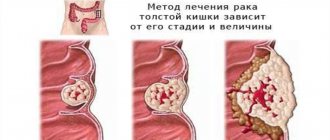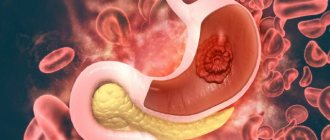Nausea and vomiting
Patient-related factors
- female gender - it has been shown that women develop nausea and vomiting more often than men;
- age under 50 years (younger patients are more susceptible to developing T&R);
- a history of nausea and vomiting during pregnancy (“toxicosis”);
- state of low nutrition or dehydration, water and electrolyte disturbances.
- the presence of concomitant diseases, for example, leading to the development of persistent constipation, kidney disease, chronic infections.
- In addition, tumors located in the gastrointestinal tract, as well as tumors located in the central nervous system or involving it secondarily (brain metastases) themselves can cause the development of T&R.
Ask your doctor what your individual risk of developing TRI is.
Why are nausea and vomiting dangerous?
In addition to the direct negative impact on the patient’s lifestyle, T&R can lead to the development of many adverse consequences:
- The development of dehydration and various electrolyte disorders - vomiting leads to the loss of a large amount of fluid, making it difficult to replenish water reserves in the body, which ultimately leads to the development of dehydration. In addition, vital elements (electrolytes) such as potassium and sodium, which are important for the normal functioning of the cardiovascular system, nervous system, muscles, kidneys, etc., are lost along with the liquid. The consequence of these violations may be disruption of the functions of the listed organs and systems;
- Development of malnutrition – TiRs interfere with food intake, which can cause insufficient intake of essential nutrients, proteins, fats, carbohydrates, as well as vitamins and microelements. Their deficiency can lead to disruption of the functioning of various organs, a sharp decrease in resistance to infections, the development of anemia, and thrombocytopenia. Chemotherapy in malnourished patients carries an extremely high risk of complications;
- Impaired wound healing, damage to the mucous membrane of the esophagus, oral cavity, divergence of postoperative sutures; (in case of severe vomiting in the postoperative period);
- A sharp decrease in quality of life and ability to self-care.
The development of the above complications may make it impossible to carry out effective treatment, therefore the key to successful treatment of a malignant neoplasm is effective prevention of T&R. Table 1 presents the classification of T&R depending on the severity of these complications.
| Table 1. Clinical manifestations of nausea and vomiting depending on severity | |
| Nausea | Vomiting1 |
| Grade 1 – nausea leading to loss of appetite, but not leading to changes in food intake | Grade 1 – 1-2 episodes of vomiting per day |
| Grade 2 – nausea that interferes with eating, causing weight loss and/or dehydration | Grade 2 – 3-5 episodes of vomiting per day |
| Grade 3 – severe nausea, leading to disruption or severe difficulty in eating and drinking fluids, entailing the need for parenteral nutrition or hospitalization of the patient | Grade 3 – 6 or more episodes of vomiting per day, administration of parenteral nutrition, correction of fluid and electrolyte disturbances and/or hospitalization is indicated; |
| Grade 4 of this complication is not provided | Grade 4 – severe vomiting, leading to the development of life-threatening consequences, for example, severe dehydration |
1 episodes separated in time by at least 5 minutes are counted
How can you reduce or prevent your risk of developing nausea and vomiting? Treatment of nausea and vomiting caused by chemotherapy
As mentioned above, a number of effective drugs have now been developed for the treatment of TiR. The key to successfully preventing the development of severe TRI is prophylactic administration of the correct antiemetic (antiemetogenic) drug regimens in adequate doses. TiR is always easier to prevent than to treat; in addition, successful prevention prevents the development of conditioned reflex TiR. Most often, antiemetic drugs are used in combination - since drugs from different pharmacological groups have different mechanisms of action, the best clinical effect can be obtained by blocking several “links” in the chain of development of TiR at once. Table 2 presents the main groups of antiemetic drugs that are used in modern clinical practice.
| Table 2. Main groups of antiemetic drugs | ||
| Glucocorticosteroids | Serotonin receptor blockers | Substance P antagonists |
| Dexamethasone Methylprednisolone Prednisolone | Ondansetron Granisetron Palonosetron Tropisetron Dolasetron* | Aprepitant Fosaprepitant Netupitant* Rolapitant* |
| Adjuvant antiemetic drugs : metoclopramide, scopolamine, lorazepam, olanzapine, haloperidol, chlorpromazine *drugs are not registered or approved for use on the territory of the Russian Federation | ||
To control acute nausea and vomiting, combinations of the above drugs are administered before the administration of anticancer drugs (20-60 minutes before the start of treatment). For most of the above drugs, both dosage forms for intravascular use, which are administered intravenously immediately before chemotherapy, and dosage forms for oral administration (tablets) have been developed.
To date, no clinical studies have shown significant differences in the effectiveness of different drugs from the above groups. Thus, all drugs from the group of serotonin receptor blockers have equal therapeutic efficacy in the prevention of nausea and vomiting and are equally well tolerated when used in the correct dosage regimen.
However, these drugs differ in their duration of action - for example, ondansetron may need to be taken several times a day to achieve optimal antiemetic effect, while with palonosetron, a single dose of the drug is enough to prevent the development of TIR within a few days of use of the drug .
Glucocorticosteroids
form the basis of modern antiemetic therapy, they effectively prevent the development of both acute and delayed T&R, improve the general condition of patients and mood, in addition, their use prevents weight loss during treatment. When using low- and moderately emetogenic chemotherapy regimens, the use of glucocorticosteroids alone may be sufficient to control treatment-induced TRI. Glucocorticosteroids are one of the most effective drugs for the prevention and treatment of delayed TRI.
Substance P antagonists
have shown high effectiveness in the prevention of acute and delayed nausea and vomiting, it is worth noting that they are effective only in combination with glucocorticosteroids and serotonin receptor blockers (synonym - 5HT3 receptor antagonists). They should not be used in monotherapy without the simultaneous use of glucocorticosteroids and serotonin receptor blockers, as this will not lead to the desired result. The addition of drugs in this group to standard antiemetic therapy with drugs from the above groups makes it possible to increase the effectiveness of antiemetic therapy without a significant increase in the number of adverse events.
The main disadvantage of using substance P antagonists is their relatively high cost. As with serotonin receptor blockers, there were no differences in the effectiveness of drugs from this group, but they differ in dosage regimen. Thus, aprepitant should be taken 1 tablet per day for 3 days, while fosaprepitant and netupitant provide control of nausea and vomiting after a single dose.
Adjuvant antiemetic drugs
are used only in combination with the main drugs from the groups presented in the columns of the table. Metoclopramide (Cerucal) is a moderately effective antiemetic drug that is generally well tolerated and can be used as a safe adjunct to antiemetic therapy with dexamethasone.
Another promising antiemetic drug is olanzapine
, which is designed for use in psychiatric practice. It has a diverse effect on the central nervous system, including a pronounced antiemetic effect. Studies have shown that the combination of glucocorticosteroids, 5-HT3 receptor blockers and olanzapine has the same clinical efficacy as the use of aprepitant in combination with the same drugs. The big advantage of this drug is its low price.
An example of an effective antiemetic therapy regimen
The standard regimen of antiemetic therapy when conducting highly emetogenic chemotherapy, for example, using drugs such as cisplatin, doxorubicin or epirubicin, is as follows (specific drugs are for example only, they can be replaced with similar drugs from the same group without compromising effectiveness):
Day 1 – immediately before the administration of anticancer drugs, the patient is prescribed aprepitant at a dose of 125 mg (orally), in combination with ondansetron at a dose of 16 mg intravenously and dexamethasone at a dose of 12 mg intravenously or orally.
Subsequent days - aprepitant is prescribed at a dose of 80 mg (orally) on days 2 and 3 of the course, dexamethasone is prescribed at a dose of 8 mg intravenously or orally.
Antiemetic drugs may cause side effects
As with any other medication, various undesirable effects may occur while using antiemetics. It is worth noting that in most cases, antiemetic therapy is well tolerated and the benefits of its implementation significantly outweigh the risk of side effects.
This section lists only the most common unwanted and/or most important side effects of drugs; for more complete information, please refer to the approved prescribing information for the specific drug.
Serotonin receptor blockers (ondansetron, granisetron, etc.)
may cause side effects such as headache, constipation and/or diarrhea, general weakness, dry mouth. It is highly desirable to use drugs from this group in combination with glucocorticosteroids.
Glucocorticosteroids
cause a number of side effects, which are listed below, however, it is worth noting that most of them have minimal severity and, as a rule, develop with long-term use of drugs of this group, are reversible and regress after completion of treatment.
- Increase in body weight;
- Reduced resistance of the mucous membrane of the gastrointestinal tract and, as a consequence, the development of gastritis, duodenitis (inflammation of the mucous membrane of the duodenum), ulcerative lesions of the mucous membranes of these organs;
- Muscle weakness;
- Increased concentration of glucose (sugar) in the blood plasma;
- Insomnia, increased excitability, mood changes;
- Reduced transparency of the lens (development of cataracts);
- Symptoms of suppression of the functioning of the adrenal cortex;
- Decreased immune system activity, increased risk of developing infections.
Ask your doctor about the risk of side effects from antiemetic therapy and what steps you can take to prevent them.
Possible reasons for development
The most common cause of vomiting is food/alcohol/drug/drug poisoning. The mechanism of eruption of stomach contents can also work in a number of infections, irritation of the abdominal cavity, and inflammatory diseases of the gastrointestinal tract. Sometimes the body independently releases dangerous substances or stops functioning normally under the influence of severe psychological stress/nervous system disorders.
If blood is found in the vomit, it means bleeding has developed in one of the parts of the body. Even if you notice one small blood clot, you should consult a doctor immediately. The amount of erupted blood may not correspond to the real state of affairs. The only thing you should focus on is the shade and structure of the biological fluid. Bright scarlet blood indicates heavy “fresh” bleeding, but clots of dark purple blood indicate a small but prolonged amount of blood loss. Upon contact with gastric juice, the blood coagulates and acquires a dark tint.
Vomiting blood poses a serious threat to human health. As soon as you notice these symptoms, seek emergency help immediately.










